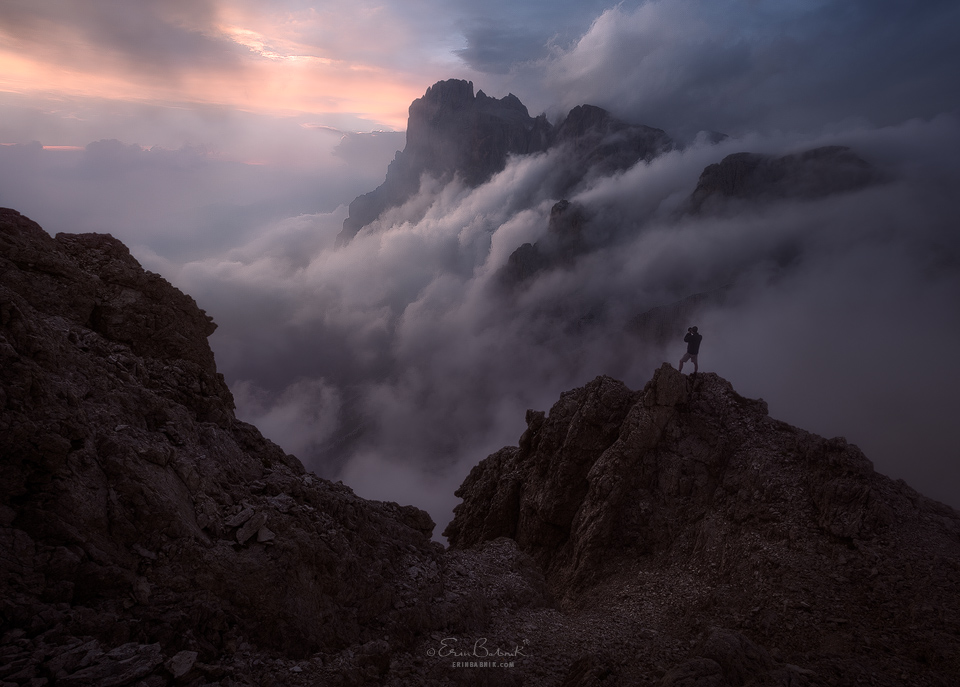
Respect
With nature as our subject, landscape photographers have a special duty to respect it. Common sense dictates that we should protect whatever is essential to our own goals, but respecting nature goes beyond conservation and advocacy, as important as they are. Developing a relationship with nature is like developing one with a person; the more effort that you make to get to know a person, the better able you are to empathize with that person and to deepen your bonds with each other. Respecting nature means viewing it as a partner rather than as a trophy or a realm to be conquered, and achieving this level of respect allows us to see and to understand nature in ways that not only lead to great personal experiences but ultimately benefit the creative process as well.
Curiosity
The curious photographer will venture farther, look more closely, and experiment more readily. Curiosity is the quality that causes us to find out how a location might appear from a different vantage point, during a different time of day, or in a different season. It is the quality that makes us find the smaller details of nature that can easily be overlooked. When we are out in the field or in the development process, curiosity will lead us to try different techniques and to ponder our stylistic decisions. Being intrigued by our surroundings and our own ideas is what leads to exploration, discovery, experimentation, and creative growth.
Flexibility
Nature is notoriously capricious, having change as its only constant. If you are willing to adjust to conditions and make the most of whatever nature gives you, then the world is your oyster. Being too fixated on a specific outcome can cause us to miss opportunities, so while it is extremely helpful to pre-visualize the potential of a location and a set of conditions, we should also be prepared to adapt or even abandon those ideas as other opportunities present themselves.
Patience
A photographer friend of mine once shared this dialogue that he had with a passing hiker while he was standing behind his tripod one day.
Hiker: “It looks like you’re waiting for something to happen.”
Photographer: “I am.”
Hiker: “Well, what, then?”
Photographer: “I don’t know. It hasn’t happened yet.”
Sometimes simply watching and waiting allows opportunities and ideas to come together in fruitful ways. It can be very rewarding to remain in one place for a while and see what surprises fast-moving weather might bring, what changes may take place between sets of waves, or how a forest might transform as mist or light shift around in it. While the temptation may be great to run around shooting as many compositions as possible, that approach often results in a lot of images that are missing something—missing that special confluence of time and place that results from letting the magic come to you and being ready for it when it does.
Speed
On the other side of the coin from patience is speed, the ability to respond quickly to opportunities and to think on your feet. After waiting patiently for a marvel of nature, you may find it finally arriving rather suddenly and, all too often, in a situation that requires a mad dash, a quick lens change, a host of revisions to camera settings, or all of the above. Being able to respond quickly to ephemera can often make the difference between a great shot and a great memory.
Integrity
Simply put, as creative photographers, it is important that we remain true to our own art. There comes a time after we reach a certain stage of creative development that we have the choice to do what most interests us, or else to do what we think will most interest other people. Naturally, any photographer who shares or shows their photographs cares about how they will be received, otherwise they would keep them to themselves, but caring about those opinions needn’t mean catering to them.
Courage
Landscape photographers often find themselves in wilderness areas, in foreign lands, in extreme weather, on the edges of cliffs, close to pounding surf, or even in all of these situations at once. The dangers of working outdoors are many, making it necessary to exercise caution and good sense, and when those requirements are met, to find the courage to proceed. Perhaps even more courage may be necessary for what follows, however. It can require great bravery to make creative decisions that are risky, to experiment with new ideas and locations, and to release the results to the world at large.
I could easily extend this list to include many more virtues, but these seven strike me as the ones that form a core set that many inspirational landscape photographers seem to have in common. What virtues would you add to this list? If any come to mind, you are very welcome to share them in the comments below.
Erin Babnik is known internationally as a leading photographic artist, educator, and speaker, and she is honored to be a Canon Explorer of Light. Immersion in the visual arts has been the one constant in Erin’s life, including an extensive background in various visual media and a doctoral education in the History of Art. She is based out of offices in Europe and California and travels widely for workshops and speaking engagements. She is also known for her love affair with all things purple. | Erin’s Website: www.erinbabnik.com

Recent Comments